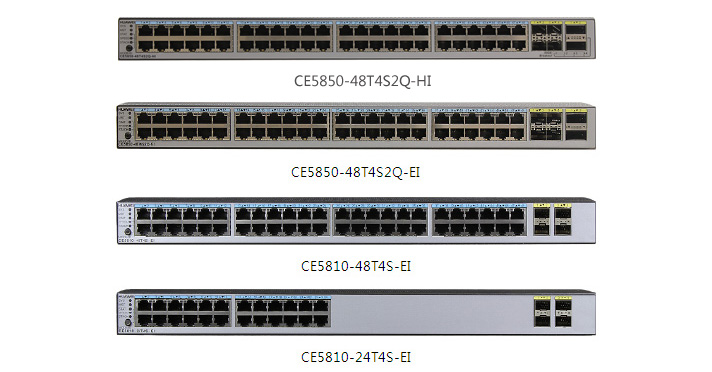Switch de centro de datos de la serie CloudEngine 5800
La serie CloudEngine 5800 (CE5800 de forma abreviada) de Huawei incluye switch Gigabit Ethernet de próxima generación de alta densidad diseñados para centros de datos y redes de área de campus de alta gama. El hardware de los CE5800 tiene un avanzado diseño de arquitectura con la mayor densidad de puertos de acceso GE. El CE5800 también es el primer switch Gigabit Ethernet de acceso en proporcionar puertos uplink de 40 GE. Con el uso de la plataforma de software VRP8 de Huawei, los switch CE5800 soportan la interconexión transparente de lotes de enlaces (TRILL) y tienen una alta capacidad de apilamiento (hasta 16 switch miembros en un sistema apilamiento). Además, se puede cambiar la dirección del flujo de aire en los canales de ventilación (de adelante a atrás o de atrás a adelante). Los switch CE5800 pueden funcionar con los switch CE12800 para crear una estructura escalable, virtualizada y de alta calidad que cumpla con los requerimientos de los centros de datos en términos de computación en nube.
Los switch de la serie CE5800 ofrecen tres modelos: CE5850-48T4S2Q-EI, CE5810-48T4S-EI y CE5810-24T4S-EI. El CE5850-48T4S2Q-EI posee 48 puertos GE Base-T, 4 puertos SFP+ de 10 GE y 2 puertos QSFP+ de 40 GE. El CE5810-48T4S-EI cuenta con 48 puertos GE Base-T y 4 puertos SFP+ de 10 GE. El CE5810-24T4S-EI tiene 24 puertos GE Base-T y 4 puertos SFP+ de 10 GE. Los switch CE5800 ofrecen acceso GE de alta densidad que les permite a las empresas construir una plataforma de red de centro de datos escalable en la era de la computación en nube. También pueden utilizarse como switch de agregación o acceso en redes de área de campus empresariales.



